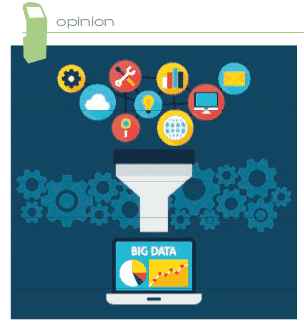
Digital experiences shouldn’t be about technology, they need to be about the experience itself
By Neil Farr, Managing Director, Acquire Digital – www.acquiredigital.com and the article is republished with permission from Kiosk Solutions Magazine
It’s hard to believe but when I started my working life in 1991 for an A/V company, it was ground-breaking that we moved from a bank of slide projectors to having a single computer and a projector to show presentations.
For a meeting with a client, we had to use printed maps to get there, and had to stop to ask directions or to find a telephone box to call the client to say we were lost and may be late. Videos were grainy, and VHS tape and even broadcast quality video had problems. But back then, everyone thought it was an amazing time to be alive with all of this technology available.
Later, we started using the presentations in retail stores on big old TVs, using slow 14.4Kbps dial up modems to show in-store TV that we could update remotely (albeit slowly). And then, we realised we could also use the same technology with a touchscreen on the front of the monitor in a box to provide loyalty schemes, or targeted coupon delivery and endless aisles.
Everything then changed – a thing called the World Wide Web appeared, and people could see reams of text and occasionally singing, dancing hamsters appear on their computer screens – so long bulletin boards.
People then realised that we needed a faster way to get the dancing hamsters to our screens, and the speed of the internet went up – faster and faster.
Consoles appeared, and people who didn’t sit at computer desks put them under their televisions in the lounge where the whole family discovered entertainment could be more than simply watching VHS tapes, and could actually be interactive. This led to needing faster and better Internet connections as people were demanding better multimedia and videos and didn’t like reading reams of text on the web.
Head first into digital

this new digital age and what could be delivered could never be sated.
Then a company who had been making one of the most popular devices capable of not needing to stop at phone boxes to ask directions – Nokia – announced to the world that the Internet was now truly mobile too with their WAP-capable 7110 phone. But when people realised WAP wasn’t quite as good as their home computer at accessing well, pretty much anything. But they still liked the idea of having a handheld device that removed the need to carry around a diary, notepad, music player, games console and more. They tried device after device known as a PDA which promised to do all this. Shortly after, a company called Apple released a miniature computer, with a touchscreen that did anything you could possibly think of, including accessing the Internet wirelessly, and didn’t need a ‘geek’ to make it work, so people bought it.
In turn, Internet Service Providers made the internet faster, and able to store more information, and now also had to make it accessible wirelessly. The people who had something to put on the web could now put more videos and graphics and information there, and now the public could access that when they wanted to. All this meant that the Website owners had to contend with visitors with a shorter and shorter attention span. Also, now there was a cool place where you could keep videos, as well as ways that people could share social experiences, and links to those videos, too.
With the dancing Hamsters’ now ignored as a wealth of videos showing skiing ostriches, skilful ball trick shots and other seemingly home-created videos, using those now much more advanced mobile phones to film them, have filled the shared social media channels. People realised that the videos could be shared around like a common cold and become Viral.
With all of that technology and media and data, it wasn’t long before the owners of ‘real’ environments got worried – would people still visit their stores when they could access websites instead? So, in their bricks and mortar world, they installed screens with videos that played adverts and occasionally provided computers with Internet access so customers could still get their online appetite sated – the plan was typically to get the customer to just check out the web version of the shop they were in.
Technology has continued to advance where it’s almost impossible to keep up with the latest developments, as well as know what will be adopted, and what will become an unused quirk of technology only remembered in Wiki articles by occasional researchers in the future.
Predicting patterns in usage
Realising this, other people started getting the computers to track what people are doing in more detail and called it ‘big data’. They even built supercomputers and together with programs that adapt their own rules to learn, they use them to help with looking for trends and patterns in how people int eract with the various forms of technology.
By making technology to ensure people are tracked in the ‘real’ world, this meant that those people can try out something and almost instantly measure the reaction. The results of this can then be used along with our natural inquisitiveness to become more engaged with one thing over the millions of others they could engage with.
In the digital age, advancements in the technology as demonstrated at trade shows every year, tend to drive the Zeitgeist – go on, use the smartphone you probably own to look up what that word means – and then realise that by doing so, you have contributed to it.
Making life easier
While writing this article I intentionally chose to use generic words like ‘people’ when I could to make it appropriate for different vertical markets. The writing style and the content itself was carefully chosen. So I can now make some assumptions about the type of person you are, and how much I can sway your opinions to ones that I think are beneficial to us both.
Do you, reading this article, consider the paper or the screen technology you are viewing it on? Or the Internet that made it possible for me to write it and send it to the publisher?
The fact is that in 1991 when none of this was around and no one other than one man had considered what the Internet could be used for, yet now over 3.2 billion people are connected to it – over 50% of the world’s population – didn’t happen because of the technology. It happened because of what people do with technology. And the success will be measured by the experience of what they interact with – what the experience was like, does it make their lives easier, does it save them (precious) time? Does it become an experience they expect in future, or simply one they can live without?
Throughout the world, people like you and me are working hard to build a solution that will be a success and become part of modern life for people. We can’t control whether it will be a success or forgotten, but by thinking of the people who will interact with it and what they experience, it’s at least more likely to be a success.





